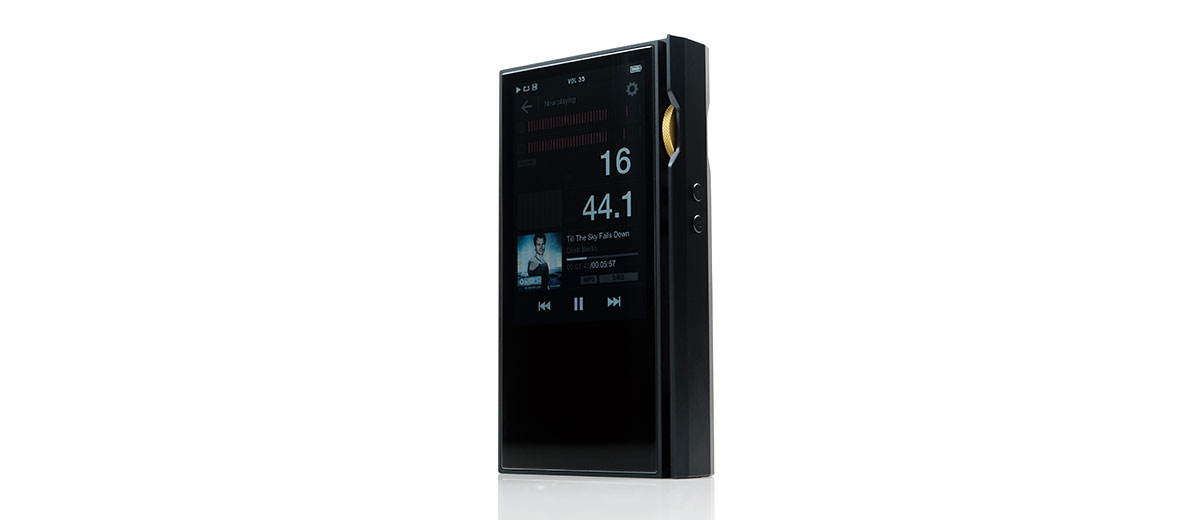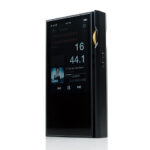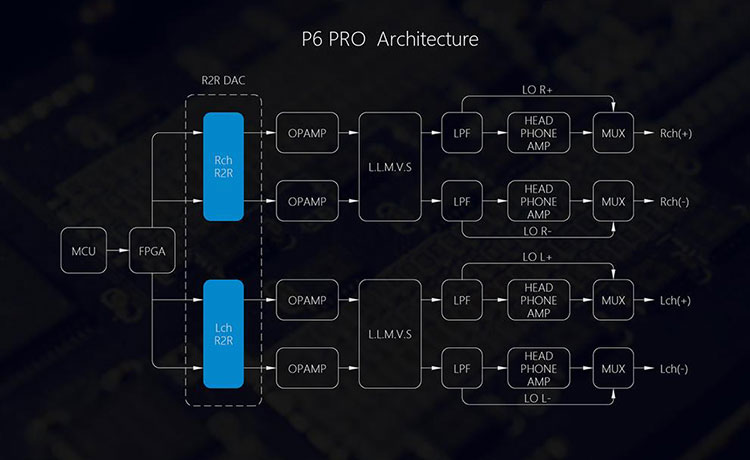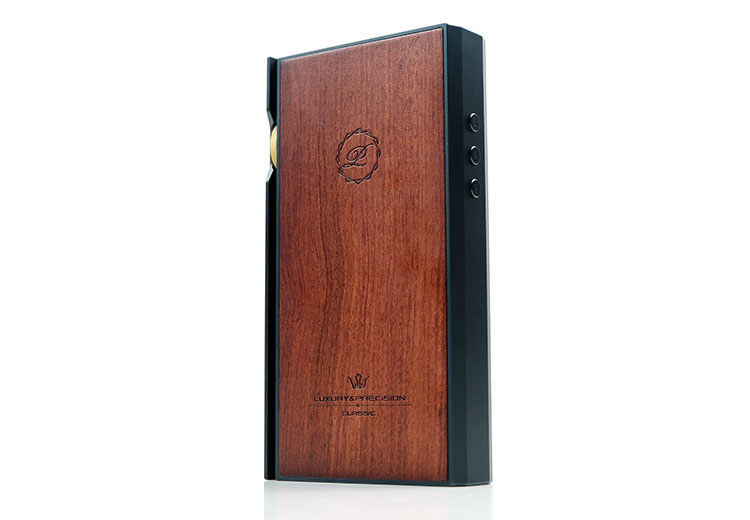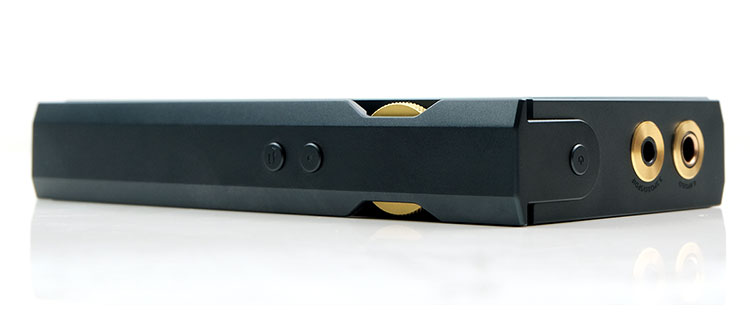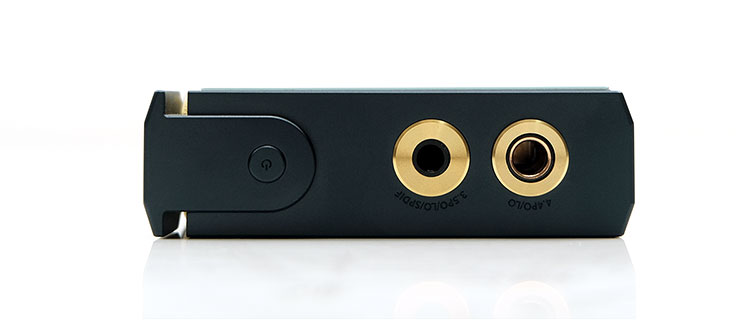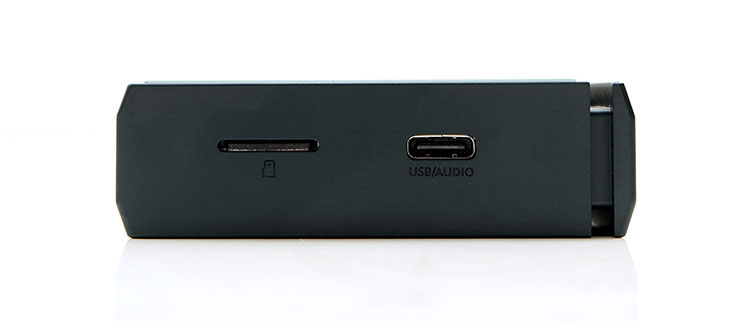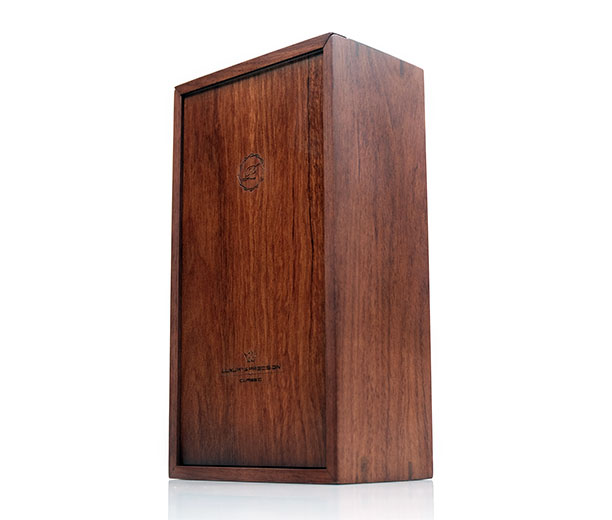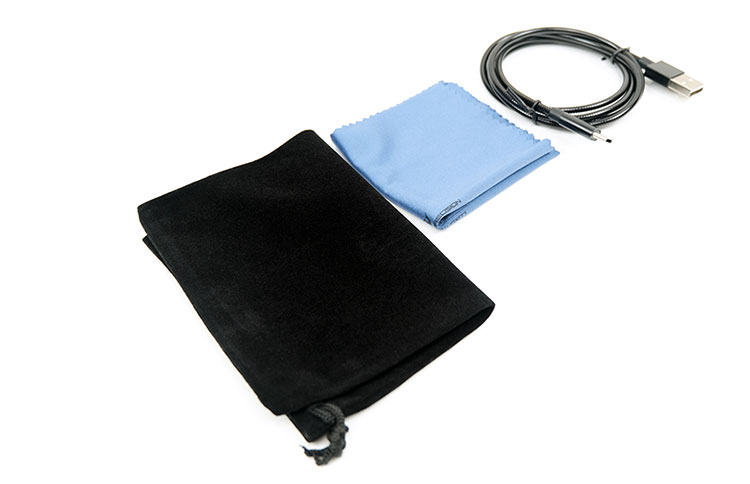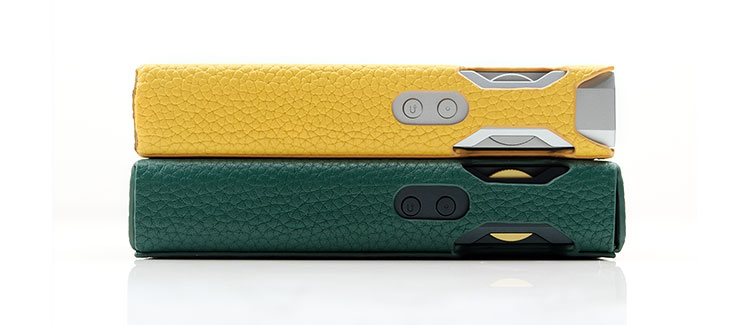The Luxury & Precision P6 Pro is a revised edition of the original flagship P6 R2R DAP featuring a new touchscreen and improved noise performance. It is priced at $3899.
Disclaimer: The Luxury & Precision P6 Pro was sent to us as a sample in exchange for our honest opinion in this review. We thank Luxury & Precision and Musicteck for this opportunity.
To learn more about Luxury & Precision reviews on Headfonics you can click here.
Note, this 4-page review follows our new scoring guidelines for 2021 which you can read up on here.
I use the original P6 a lot and when I say a lot I mean for virtually every review and anytime I am legally let out of the house. Granted, it is not the best for modern social connectivity with its lack of Android as well as WiFi. However, its sound quality is special in the way it brings R2R right into your personal space much in the same way as a quality R2R DAC does.
I thought we will not see better sounding for a while but how wrong was I with the launch of their new P6 Pro DAP. The architecture, (explained in more detail below), has much the same thrust with the use of an R2R design, but this time we get some choice improvements on the original. Improvements that make it vastly more useable and sonically even better than the original.
The price has gone up also to $3899 making this a true TOTL DAP and there may be a number of reasons behind that but suffice to say the P6 Pro could be an end game both sonically and financially for many an audiophile.
Tech Changes
Resistor Upgrades
As before, Luxury & Precision are using a 100% resistor-based fully discreet digital implementation for the P6 Pro DAC design unlike delta-sigma and multibit chipset-based architectures. That means a ton of additional controls over how the DAC is implemented, something that is entirely more restrictive using all-in-one chipset solutions on such tiny PCBs.
To achieve this level of control on the P6, Luxury & Precision’s R2R architecture means a ton of tiny resistors all individually mapped out with specific engineering requested processing parameters to convert the digital signal to analog in the exact way they want it to be done.
With the P6 Pro, Luxury & Precision have cheery picked the absolute best-matching high-grade 1/10,000 resistors to build a rail equivalent to two P6 R2R boards or the equivalent of 16 PCM1704K multibit chipsets in parallel.
Dynamic Range Performance
If you remember the P6 R2R DAC pitch was sold as the equivalent to 8 PCM1704k multibit chips in parallel. However, for the P6 Pro and given the size of the housing, it was considered impossible to integrate additional matching components to improve key aspects such as the SNR and dynamic range which was then set at 123dB.
By going back to the quality of the resistors and matching process inside the P6 Pro rails, Luxury & Precision has managed to improve the SNR to 125dB whilst retaining the same 5V output voltage, which is very impressive for an R2R DAC.
Not that the P6 lacked dynamic range, but rather the P6 Pro should offer a noticeable improvement with sensitive IEM pairings being able to produce blacker backgrounds.
Volume Control Changes
LLMVS or Lossless Matrix Volume Control System went hand in hand with the R2R DAC SNR and dynamic range performance. The volume control on both the P6 and P6 Pro is an electronic relay array which is normally not recommended in desktop solutions given they tend to produce high voltage swings.
This is less of a worry for a DAP that sits under a 10V swing so they do not need to revert to a huge mechanical relay construction. L&P has further refined the LLMVS on the P6 Pro to better respond to the improved resistors inside the R2R rail. This will help realize the improved noise and dynamic range of the upgraded resistors through a much lower signal attenuation.
Decoding
Decoding capability remains unchanged, however with the P6 Pro capable of the same conversion capability as the P6. This means a maximum 32BIT/384kHz PCM and DSD256 which falls a bit short of modern delta-sigma DAPs which can now hit 786kHz sampling and DSD512. The P6 Pro will be able to handle SACD ISOs of which I have quite a few.
How much value you put into DSD512 capability is entirely up to you. The vast majority of commercially available material is 24BIT/192kHz PCM and DSD64/128 maximum so while future-proofing is more limited, the here and now is 100% relevant.
FPGA Enhancements
One change from the original P6 decoding performance is the underlying FPGA with a tighter level of clocking accuracy. The FPGA relationship here is referred to as an FPGA Master whereby the high-precision and low-phase noise external clock connected to the FPGA is used as the master clock and fed to the discrete R2R DAC.
Because it is used as the master clock it is also fed to an improved BT 5.0 protocol stack with a new algorithm to further reduce jitter.
Amplification
There is relatively little change in terms of improved output power ratings between the original P6 and the P6 Pro. Thus, the P6 maximum output of 700mW from a 32Ω load balanced and 180mW single-ended remains the same in the P6 Pro. Not the most powerful but perhaps the most flexible for sensitive monitors.
The lineout options are also unchanged from the previous edition so both the 4.4mm LO and 3.5mm LO are single-ended in design but with a switchable voltage at 1.55V and 2.45V. Output impedance is also unchanged for both single-ended and balanced at well under 0.5Ω.
What has improved is the P6 Pro’s new SNR performance from the R2R DAC rail which is now enhanced from 123dB to 125dB. That will translate to a higher dynamic range performance than the 118dB of the original P6’s amp stage from both SE and balanced outputs.
Just to put that into some competitive perspective, that’s 2dB higher than the Lotoo PAW Gold Touch unbalanced and around 2dB less going balanced. The P6 Pro certainly performs better than the Hifiman R2R200 Black version for SNR which is rated 10dB lower at 115dB.
Design Changes
Form Factor
The form factor has not changed from the P6 which means an excellent size for single-hand use. In the 8 months or so of using the original P6, I have to say this is one of the more pocketable flagship DAPs out there.
Its 248g weight would have been heavy a few years ago but not these days when some are way over 300g and even 400g. The only TOTL ‘DAP’ considerably lighter is the Hifiman R2R2000 at just 142g.
I would still heavily advise using the supplied case with the P6 Pro. The edging is sharp and unforgiving so aside from protecting an expensive piece of electrical gear, you will also be protecting your palms. The leather case will soften the handling experience considerably.
Aesthetics
Although the relatively compact and minimalist form factor has not changed one bit between the P6 and the P6 Pro the aesthetics have. Instead of a grey finished aircraft grade of aluminum we now have a black finish with the same grade of material.
The matching silver rotary volume dial has now been switched to a gold version which provides for an attractive high contrast motif on the black body. It also beautifully complements the gold-plated jack rings on the top panel. Gold on black is a very popular flavor in Asia with a lot of high-end DAPs following the same design flow such as Lotoo, Cayin, and iBasso.
On the back, a big change with a switch from the older P6’s glass panel to a new vertical grained wood finish with the logo and LP moniker carved into the top and bottom. It’s a really nice choice of wood as it matches the accompanying wooden case better than the glass panel and might possibly be more resistant to accidental knocks.
Screen
The P6 Pro now has a capacitive touchscreen which is a huge upgrade on the P6’s non-touch LCD screen. Everything changes when moving to touch-based operation from non-touch. This includes ease of access, speed to execute, less wear and tear on mechanical dials and buttons as well as simply being more in tune with modern user demands.
The P6 Pro uses a G+G capacitive touch LCD panel but given the same form factor, it is perhaps unsurprising that the panel dimensions remain the same also. That means a 3.5-inch IPS screen with a 480 x 320 resolution with a fair degree of free front panel real estate below it.
However, underneath LP has done a bit of tweaking on the amp circuit and volume control system to help reduce potential EMI from the new panel.
We will dive a bit more into the improved navigation experience on page 2, but in terms of general legibility, the older screen does seem to be marginally brighter at full strength. The impact on viewing the screen from wide angles, however, does not seem to be impacted.
Control Changes
Aside from the obvious improvements from implementing the touchscreen UI, LP has kept the main physical controls of the original P6 completely intact, both in terms of external placement and function.
On the left panel, you have your traditional 3 button playback button suite and on the right, just below the potentiometer, you have two command control buttons.
So, if you wish to not touch the P6 Pro touchscreen for some deluded reason you can carry on using a mix of the side panel buttons and rotary dial to navigate and execute as you did on the P6.
Of course, if you wish to conserve battery life and sleep time on the screen or have it switched off then using the media control physical buttons for playback on the left are essential. Less so navigating using the rotary dial which I found to be quite cumbersome and confusing on the original P6.
If you want to disable the rotary dial or even go 100% rotary dial you can do so inside the advanced key settings much like the P6. However, this time the new P6 Pro OS gives you an additional option to disable all the physical keys and go 100% touchscreen for controls should you need it.
The P6 Pro power/LCD screen on/off button remains in the same top-panel position as the P6 which is pretty much standard on most DAPs. Volume control is beautiful on the dial, very accurate and precise also.
I/O
As before, the P6 Pro digital I/O are housed at the bottom with analog PO and LO located on the top. At the base, you have a single open microSD slot and a USB-C port which duals for USB-DAC (no OTG), file transfer, as well as charging duties.
At the top panel, you have two jack ports, 3.5mm unbalanced and 4.4mm balanced. Both dual for lineout though they are not dedicated as both are single-ended lineouts in terms of capability.
You can switch from PO to LO via the OS as well as adjust the level of voltage supplied to the LO, in this case, 1.55V and 2.45V. The 3.5mm output also triples up with SPDIF output capability.
My one critique with the new P6 Pro design for I/O is the labeling. The etched black on black makes them a lot harder to read compared to the black on silver of the original P6. In low light conditions, they are almost invisible.
Battery Life
No surprises for guessing that LP kept with the same 4000mA/H Lithium battery for the P6 Pro which is rated at 15 hours life cycle from full to empty. With the new touch interface I was sort of expecting a diminishment in real-world performance of the battery but to be honest I didn’t find a huge difference between the P6 Pro and P6.
One thing to note is screen brightness. It does seem to have a big impact on battery life when set to maximum in the brightness menu. The brightness has settings from the lowest at 1 and brightest at 5 and my normal setting is 3. Setting a fully charged P5 to 5 and the P6 Pro to 3 drained the P6 battery at a much faster rate.
Battery life will drop more considerably below the 14 rated hours with Bluetooth usage and hi-res decoding. However, usage conditions such as low-gain SE line-out only bypassing the internal amplifier should get you a little higher than 14 hours, (keep the screen off when not in use).
Storage
The P6 Pro retains the original P6 mix of 64GB of onboard flash storage and a single microSD external memory slot on the base with up to to 1TB officially supported with the latest firmware. The original P6 firmware started out with a 10k -12k file storage limit which is now also gone on both the P6 and P6 Pro.
The previous FAT32 format restriction on the P6 still seems to be there which is s shame. That means cards over 32GB in size must be formatted to FAT32 for them to be read by the P6 Pro.
All my Ultra SanDisk SDXC cards did not work with the P6 Pro until reformatted to FAT32. If you do not it will prompt you to reformat which could mean losing all your files if you click yes.
Packaging & Accessories
Aside from a change in the carry case, what you get with the P6 Pro in terms of packaging and accessories is the exact same as what you got with the P6. However, the wood panel rear of the P6 Pro is a much nicer compliment to the external wooden carry case so there are some indirect pros of using the same packaging.
The external packaging for the P6 Pro is not a glamourous affair bring a simple black cardboard container covering that lovely rich grain wooden slider box with the LP log etched on top. If anything, it feels made to just protect the wooden display case.
Inside, you get two layers of protective foam with a clean display of the P6 Pro inserted on top and the accessories just below the top layer. You can lift each layer cleanly with a small nylon pull to the top to prevent you from damaging the casing.
Accessories
The P6 Pro accessories headcount is not huge but you do get that all-important leather case (Musicteck bundle) which I highly advise you to slip on to protect the player. You also receive a few screen protectors but sadly nothing pre-applied so you will have to spend a bit of time carefully applying them to the screen.
Aside from the protectors you also receive a soft velvet carry pouch, cleaning cloth for lint, and good quality short 1m USB-A to USB-C cable for charging, USB-DAC, and data transfer duties.
New Carry Case
So now we have a new green faux leather carry case for the P6 Pro to replace the yellow P6 case. I suspect some might have wanted a black one but I am a colors guy and green is cool.
How to slide the P6 Pro into the case has changed and here I am reminded of a ddHiFi creation with its side loading flap lock rather than an opening at the base. This is a lot more secure in case your old one has been stretched.
With a side-flap which you can tuck in neatly, there is zero chance of the P6 Pro sliding out. Mind you, the P6 yellow case of mine has always been rock solid but the additional safety measure and protection for the top panel is welcome.
As with the original case it holds its shape well with a strong cornering frame and a fairly tight wrap. No aspect of the case makes it difficult to plug in big jacks or touches on the volume control in an obtrusive manner.
Click on page 2 below for software and sound impressions.

